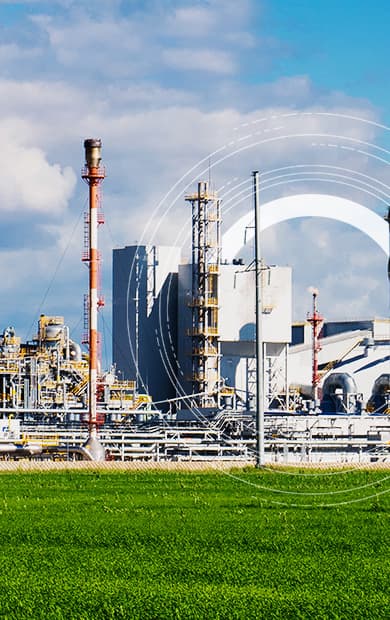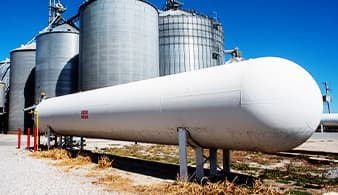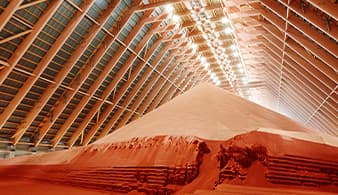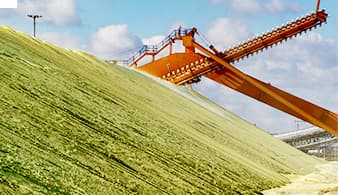概要
肥料業界は、政策や規制の変更、政情不安、紛争、新たなマクロ経済の現実によってもたらされる課題によって、市場力学に劇的な変化が起きています。また、エネルギー転換と野心的なゼロカーボン目標に向けた動きは、業界に新規参入と新たな機会をもたらしています。
市場の全体像を把握することは、機会を生かし、課題のリスクを管理するために、これまで以上に必要となりました。
アーガスの肥料マーケット・インテリジェンスは、お客様の市場動向把握、意思決定の一助となるべく以下を提供します。
- アーガスの価格レポートサービスは、堅牢な日次および週次価格評価、市場を動かすニュース、実用的な市場コメント、独自データを提供します。
- 短期的見通しと中長期的分析サービスは、価格、供給、需要、コスト、貿易、プロジェクトに関する業界をリードする予測と分析を提供します。
- アーガスのコンサルティング・サービスは、お客様とパートナーシップを組み、市場特有の調査や分析を含む完全オーダーメイドのコンサルティング・ソリューションを提供します。
Our market coverage
Argus is the leading independent provider of market intelligence to the global fertilizer market.
最新ニュース
世界の肥料産業に関する最新の市場動向ニュース
CBAM documents outline preliminary ammonia values
CBAM documents outline preliminary ammonia values
London, 17 December (Argus) — CBAM documents outline preliminary ammonia values Preliminary documents from the European Commission released today confirm details for the ammonia free allocations benchmark and country-specific default values in the carbon border adjustment mechanism (CBAM). The documents outline that the ammonia free allocations benchmark is being revised lower to 1.522t of CO2 equivalent (CO2e), down from 1.57t, in line with leaked documentation seen last week . This will be subject to a 2.5pc reduction in 2026, lowering it to 1.484t. The documents are likely to be made official in 2026. The preliminary documents also confirm that the default emissions value for US ammonia is being revised to 3.44t of CO2 equivalent (CO2e) in 2026, with most other key supply regions to Europe in line with previous estimates. Algeria is valued at 2.10t CO2e in 2026, Trinidad is higher at 2.44t CO2e, and Egypt is 2.07t CO2e. The default emissions values apply if there are no verified emissions data available for the imported product. The default value for US anhydrous ammonia has increased because the production route for US ammonia has changed from natural gas to petroleum coke, which has resulted in the steep rise to the emissions value. The commission has outlined a 1pc mark-up for all country default values in 2026. Theoretical default costs range up to $196/t for ammonia supplied from the US into Europe, with Trinidad supply at $96/t, Algeria valued at $62/t, and Egypt at $59/t. This is based on the prompt emissions trading system (ETS) price of $100.35/t on 16 December. The Argus Fertilizer CBAM calculator can be accessed here . By Ruth Sharpe Send comments and request more information at feedback@argusmedia.com Copyright © 2025. Argus Media group . All rights reserved.
Mosaic halts SSP production in Brazil
Mosaic halts SSP production in Brazil
Sao Paulo, 16 December (Argus) — US fertilizer producer and exporter Mosaic has idled its phosphate-based SSP production in Brazil, following increases in sulphur prices. The company announced Tuesday the halt at its Fospar, in southern Parana state, and Araxa, in southeastern Minas Gerais state, facilities. Mosaic also suspended sulphur purchases. Mosaic may review the decisions after 30 days. Global sulphur prices are on an upward trend, as the metals and battery industries are also demanding the oil refinery subproduct. Prices in Brazil rose by almost threefold in 2025 to $528/t cfr on 11 December from $178/t in late 2024. Prices have been increasing especially since 20 February, when levels were at $192/t cfr. Sulphur prices have now surpassed the $525/t level from 2022, when the Ukraine-Russia conflict raised prices to their highest level since Argus began assessing the prices in 2012. In August-October, several SSP sales from Brazil's domestic production — which also encompasses Galvani and CMOC — were concluded at prices lower than the import levels, pressuring the fertilizer price down to $175-180/t cfr at ports. Prices fell to $255/t fob Paranagua, in southern Parana state, and $288/t fob Rondonopolis, in central-western Mato Grosso state, in October, the lowest level since 2023. Mosaic did not provide the production capacity data on the units. By Gisele Augusto Send comments and request more information at feedback@argusmedia.com Copyright © 2025. Argus Media group . All rights reserved.
Mosaic pauses Esterhazy potash mining after fatality
Mosaic pauses Esterhazy potash mining after fatality
Houston, 15 December (Argus) — North American fertilizer producer Mosaic paused potash production today in Esterhazy, Saskatchewan, after a worker died in a mine collapse. According to Mosaic, a "fall of ground" incident took place at the K3 underground mine in Esterhazy, resulting in the death of one employee. No other injuries were reported. The producer's emergency response team was activated following the incident. The site is being secured and a full investigation is underway, Mosaic said. The Esterhazy site has a nameplate capacity of 7.8mn metric tonnes/yr of potash and three mines— K1, K2 and K3— with K3 completed in 2022. By Taylor Zavala Send comments and request more information at feedback@argusmedia.com Copyright © 2025. Argus Media group . All rights reserved.
US-Belarus potash trade may soften MOP pricing outlook
US-Belarus potash trade may soften MOP pricing outlook
London, 15 December (Argus) — Potash trade between the US and Belarus is set to be reinstated after an absence of almost four years, following the lifting of US sanctions on Belarusian potash on 13 December with immediate effect — a move that could soften the outlook for global MOP prices as supply options increase. The relationship between the US and Belarus had started to ease earlier this year when Belarus agreed to release 52 political detainees from its prisons in exchange for the lifting of some sanctions on Belarusian flagship airline Belavia in September. This limited rapprochement generated talk among market participants of the possibility of a further lifting of US sanctions on Belarus, which could affect Belarusian potash. US sanctions on Belarusian potash , which is produced by state-owned Belaruskali and marketed by BPC, have been in place since 2021. But the announcement over the weekend has largely caught the market by surprise. The policy change could lead to a significant shift in potash trade dynamics, with implications that extend well beyond the borders of both countries. For the US, it would further diversify its potash supply chain, reducing its heavy reliance on Canadian imports and improve its negotiating position in ongoing tariff disputes with the country. For Belarus, regaining access to the US market opens up an opportunity to diversify export destinations and stabilise revenues for one its most vital commodities. Such changes could make the US a more competitive market in terms of pricing. At a global level, buyers that had previously stopped purchasing Belarusian potash will have more supply options and could use this as leverage to push down prices with their current suppliers. On the contrary, a potential reduction of Belarusian MOP to other markets in favour of the US would likely see other markets become less competitive. But it is unlikely that the market will see such developments in the near term. It will take some time for US-Belarus trade to resume as administrative and financial processes still need to be put in place, and US potash buyers will need to be incentivised to buy Belarusian MOP over Canadian tons as some still refuse to purchase Russian product. What's in it for the US? The removal of Belarusian potash sanctions enables the US to possibly further diversify its sources for potash imports, signalling that this is more of a White House priority than market participants had originally anticipated. The US has limited domestic MOP production and is heavily reliant on imports, particularly from Canada. The country imported 13.5mn t of MOP for the 2024/25 fertilizer year, with roughly 85pc of it sourced from Canada and 9pc coming from Russia, according to US Census Bureau data. No other major potash import market relies so heavily on one source. Belarusian MOP has not touched US soil since February 2022, but in 2017-21 an average of 635,000 t/yr of Belarusian MOP was brought into the country. This policy change also comes just days after US president Donald Trump claimed he could impose severe tariffs on Canadian fertilizer imports, and the return of trade with Belarus may be used as leverage for the US in the current tariff war between the two countries. But the US will not be able to replace all of the 11mn-12mn t/yr of Canadian potash it needs with Belarusian product. It is also in line with Trump's strategy to secure the country's critical minerals needs. Trump included potash in the administration's list of American critical minerals this year and ordered the US government to fast-track permit reviews for critical minerals projects . The importance of potash was also highlighted when the White House spared a number of potassium-based fertilizer products — MOP, SOP, NOP, NPK and magnesium sulphate — from a raft of tariffs imposed earlier this year. In the US domestic market, traders appear largely unfazed by the new development. There have been strong MOP imports this year and there are currently healthy inventories of MOP across the Corn Belt. Additional volumes from Belarus could oversupply the market, pressuring prices downwards at a time when potash is already the most affordable nutrient domestically. But it is likely to take some time for Belarus to regain market share as it is possible that some companies may self-sanction against Belarusian potash — similar to companies self-sanctioning against Russian potash — while suppliers currently find prices in the US unattractive at $305-310/st fob Nola and alternative markets such as Brazil are providing a better netback, which could deter Belarus from promptly returning to the US market. Potash suppliers often switch between the US and Brazil, depending on which market is paying a premium. Moreover, the administrative processes to facilitate the return of Belarusian trade in the US will also likely take some time to be implemented. What's in it for Belarus? Belarusian potash is one of the most important commodities for the Belarusian economy and provides the country with a major source of foreign revenue. Following sanctions, Belarusian MOP practically disappeared from the global potash market in 2022. Yet Belarus regained its footing in the international market far quicker than expected and has managed to continue selling significant volumes of potash to the global market with the help of creative paperwork and lax enforcement of the sanctions. Russia played a pivotal role in this recovery. After Belarus lost access to the Lithuanian port of Klaipeda — previously the main export hub for Belarusian potash exports — from 1 February 2022, the marketer was forced to declare force majeure and find alternative routes to export its product. Today, most Belarusian potash exports flow through Russian ports, a shift that has increased costs and extended lead times. Argus estimates that Klaipeda typically handled 9mn-11mn t/yr of Belarusian MOP. This year, Belarus is on track to export more than 12mn t, surpassing pre-sanction export levels. Without access to the US and EU markets, Belarus has leaned heavily on markets such as Brazil, China and southeast Asia, often pricing aggressively to maintain market share. The reopening of US trade offers a chance to reduce dependence on these regions. The lifting of the sanctions will also make it significantly easier for companies to trade Belarusian potash around the world, except in the EU and the UK, where sanctions remain on Belarus. Importers that had previously stopped taking Belarusian MOP may now be open to trading with Belarus again. By having an additional supply option, buyers may find they have a stronger negotiating position with existing suppliers, which could put downward pressure on prices. Conversely, markets where Belarus has a strong presence could see a reduction of Belarusian volumes if product shifts toward the US, potentially making those regions less competitive. The policy change also comes at a time when Belarusian MOP capacity is increasing capacity, with the 2mn t/yr Nezhinsky MOP project scheduled for commissioning in the second quarter of 2026, and underscores Belarus' commitment to continue growing its footprint in the global potash market. By Julia Campbell and Taylor Zavala Send comments and request more information at feedback@argusmedia.com Copyright © 2025. Argus Media group . All rights reserved.
Spotlight content
Browse the latest thought leadership produced by our global team of experts.









